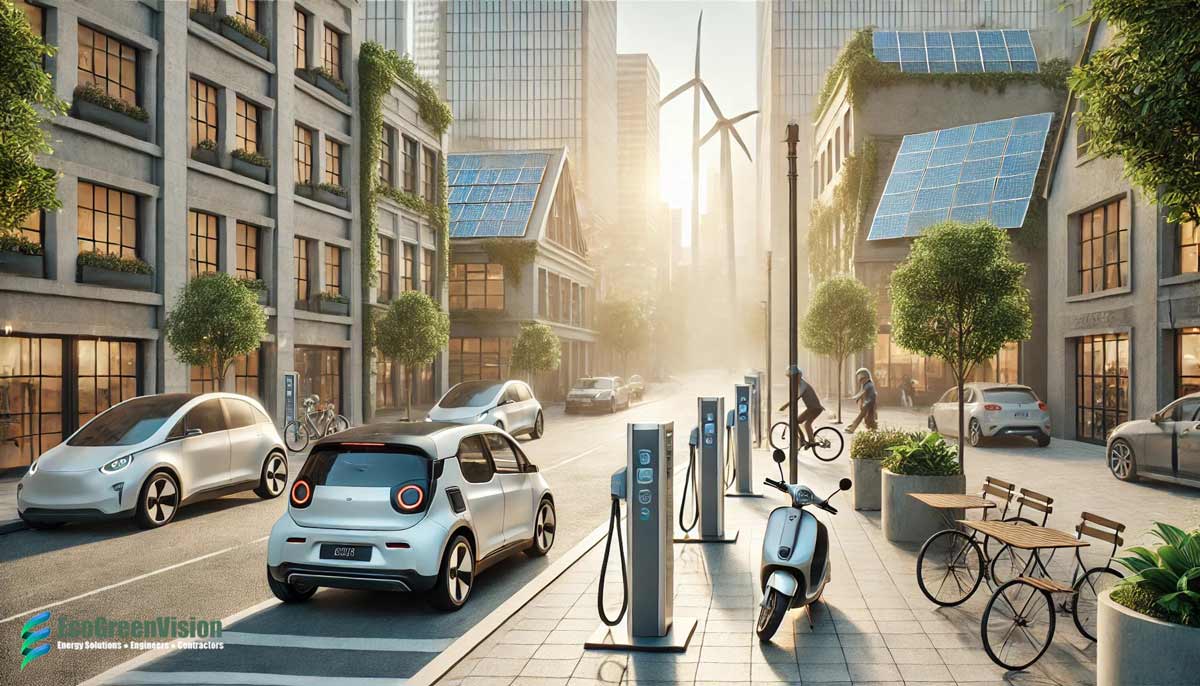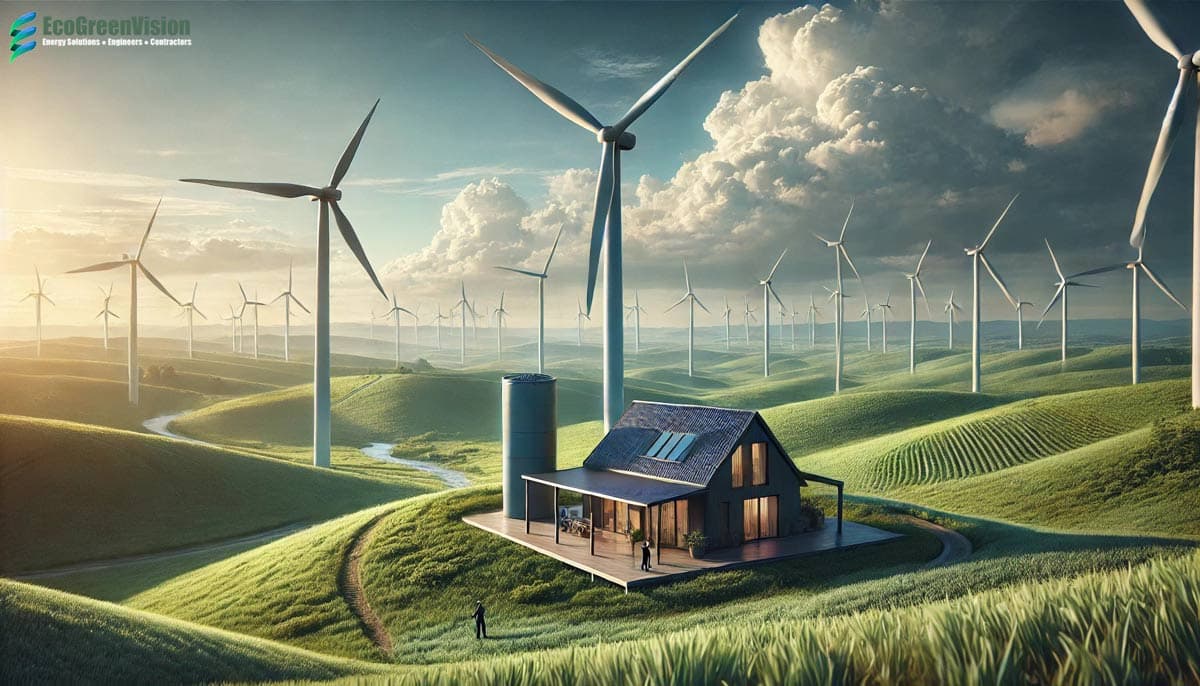
Table of content
As we step into 2025, the movement toward sustainable living is no longer just a fleeting trend—it’s a lifestyle revolution. With growing concerns about climate change and a collective push toward reducing our environmental impact, more people than ever are embracing eco-friendly practices in their daily lives. From eco-conscious homes to greener cities, sustainable living is shaping the way we interact with our planet.
For instance, urban gardens are transforming city spaces into lush, productive backyards, while zero-waste shops are revolutionizing the way we shop. Meanwhile, innovative technologies like smart home devices are enabling us to monitor and reduce our energy consumption effortlessly. These changes are not only good for the environment but also make sustainable living more accessible and rewarding for everyone.
2025 holds the promise of even more exciting developments in sustainability. Whether you’re just starting your green journey or looking for fresh ideas to deepen your commitment, the coming year is packed with opportunities to make a difference. Let’s explore the trends, technologies, and practices that can help us all live lighter on the Earth.
Sustainable Technologies in 2025
Sustainable technologies are set to dominate 2025, driving innovation and making eco-friendly living more practical and appealing than ever. These advancements not only help us reduce our environmental footprint but also make going green accessible and rewarding for individuals, families, and businesses alike.
Solar Power
Solar energy is no longer reserved for environmental enthusiasts—it’s becoming a mainstream choice for homeowners everywhere. With the cost of solar panels dropping and their efficiency improving, more households are turning to solar energy to power their homes. Modern photovoltaic systems can generate electricity even on cloudy days, and with battery storage options, you can use clean energy even after the sun sets. Imagine slashing your electricity bills while helping the planet!
Electric Vehicles

Gone are the days when electric vehicles (EVs) were a rare sight. Now in 2025, EVs are the norm, offering an eco-friendly alternative to traditional gas-powered cars. With expanded charging networks and government incentives, making the switch to electric has never been easier. Explore more about EV charging infrastructure and incentives here. Whether it’s for your daily commute or long-distance travel, EVs are paving the way for a greener transportation future.
Smart Home Innovations
Smart home devices are transforming how we manage energy consumption. From thermostats that learn your schedule to energy-efficient lighting systems, these technologies help reduce waste while lowering utility bills. For example, a smart thermostat can automatically adjust the temperature in your home based on your preferences and the weather, ensuring optimal comfort with minimal energy use.
Next-Generation Recycling
Recycling technologies are evolving rapidly, making waste management more efficient and effective. Mobile apps now guide users on proper recycling practices, while community-based programs encourage participation. Additionally, innovative solutions like automated composting machines are making it easier for individuals and businesses to turn organic waste into valuable resources.
A Call to Action for a Greener Tomorrow
Adopting sustainable technologies doesn’t have to be intimidating. From small upgrades like installing energy-efficient appliances to bigger changes like switching to solar power, every step makes a difference. As these technologies become more affordable and accessible, 2025 offers the perfect opportunity to embrace eco-friendly solutions.
Are you ready to bring these exciting green technologies into your home or workplace? Contact EcoGreenVision today and discover how you can start living sustainably!
Get in Touch
Modernize Your Facility & Save on Energy Costs
The Importance of Nature in Urban Living
In the hustle and bustle of modern cities, the presence of nature is more than a luxury—it’s an essential element of healthy, sustainable living. As sustainable living trends for 2025 continue to gain momentum, integrating greenery into urban environments has become a top priority. Beyond its aesthetic appeal, nature plays a pivotal role in improving mental well-being, fostering community connections, and reducing the environmental impact of city life.
Mental Health Benefits
Living in fast-paced urban environments often leads to increased stress and mental fatigue. Incorporating nature into daily life, whether through parks, gardens, or even small green patches, can significantly improve mental health. Studies have shown that spending just 20 minutes in a green space can lower cortisol levels and boost overall mood. Read more about the mental health benefits of green spaces here. Rooftop gardens, urban parks, and tree-lined streets offer city dwellers a chance to escape the concrete jungle and reconnect with nature.
Growing Food and Community
Urban gardening is taking cities by storm in 2025, transforming rooftops, backyards, and even abandoned lots into thriving green spaces. These gardens not only provide fresh, locally grown produce but also reduce the carbon footprint associated with transporting food. Community gardens, in particular, are fostering collaboration among neighbors, building stronger social bonds, and promoting sustainability.
Imagine growing your own vegetables on your balcony or joining a local gardening club to learn sustainable practices. Urban gardens are empowering individuals to take control of their food supply while making cities greener and more resilient.
Maximizing Limited Spaces with Rooftop Farms
With urban areas becoming more densely populated, rooftop farms are an innovative solution to space constraints. These farms make use of underutilized building tops to grow food, improve air quality, and reduce the heat island effect in cities. Many businesses and residential complexes are embracing this trend, combining aesthetics with functionality to support eco-friendly living.
Powering Homes with Clean Energy
As we look toward a greener future in 2025, clean energy is at the forefront of sustainable living trends. Transitioning to renewable energy sources is not only essential for combating climate change but also offers significant financial and lifestyle benefits. By integrating innovative technologies like solar power, wind energy, and advanced heat pumps, homeowners can create eco-friendly spaces that are both efficient and sustainable.
Solar Power: Harnessing the Energy of the Sun
Solar energy continues to lead the charge in renewable energy solutions. Photovoltaic panels, now more affordable and efficient than ever, are becoming a standard feature on rooftops worldwide. These panels convert sunlight into electricity, providing clean, renewable energy throughout the day. Additionally, modern solar battery systems allow you to store excess power for use during the evening, ensuring a consistent energy supply.
Installing solar panels not only reduces reliance on fossil fuels but also lowers energy bills, making it an excellent investment for long-term savings. Whether you’re powering your home or heating water through solar thermal systems, harnessing the sun’s energy is a practical and impactful step toward sustainability.
Air Source Heat Pumps: Efficient Heating and Cooling
Air source heat pumps are revolutionizing how we heat and cool our homes. These systems extract heat from the air—even in temperatures as low as -15°C—and use it to warm your home or heat water. Acting as a reverse refrigerator, they deliver energy-efficient climate control that reduces your carbon footprint. With their ability to work year-round, heat pumps are an eco-friendly alternative to traditional heating systems.
Wind Energy: Harnessing Natural Forces

Wind energy isn’t just for massive turbines on farmlands anymore. Homeowners can now install smaller wind turbines designed for residential use. These systems work by converting wind into electricity through spinning blades that drive a turbine. Whether mounted on rooftops or freestanding, small-scale wind turbines provide an excellent supplementary energy source for homes in windy areas.
Biomass Heating Systems: Organic Energy at Its Best
Biomass heating systems offer a low-carbon alternative to traditional fossil fuels by burning organic materials such as wood pellets or agricultural byproducts. These systems efficiently provide heat and hot water while utilizing renewable resources. Biomass energy is especially popular among eco-conscious households seeking a sustainable way to stay warm.
Hydroelectric Systems: Tapping into Water’s Power
For homes near rivers or streams, hydroelectric systems provide a reliable source of clean energy. These systems generate electricity by using the flow of water to power turbines. While less common in residential applications, they offer a highly efficient and sustainable solution for areas with access to flowing water.
Solar Heating: Warm Water, All Year Round
Solar heating systems use specialized panels to absorb sunlight, which is then used to heat water stored in insulated tanks. These systems are ideal for reducing energy costs associated with water heating and are effective even in colder climates. Mounted on rooftops or walls, solar heating systems are a practical way to lower energy usage and carbon emissions.
Why Transition to Clean Energy?
Adopting clean energy solutions is more than just an environmental decision—it’s a lifestyle upgrade. By reducing reliance on fossil fuels, you can lower your energy bills, increase your home’s value, and contribute to a healthier planet. With advancements in renewable technology, these systems are now more accessible and efficient than ever before.
EcoGreenVision is your trusted partner in bringing eco-friendly innovations to your home or business. We specialize in green building development, sustainable energy solutions, and eco-friendly production methods tailored to your needs. Whether you’re looking to power your home with renewable energy, create a vibrant urban garden, or reduce your environmental impact, our team of experts is here to guide you every step of the way.
Final Thoughts
As we move into 2025, it’s clear that eco-friendly living trends are no longer just a fleeting movement—they are becoming a way of life for individuals and communities worldwide. With more people prioritizing sustainability, the demand for innovative green technologies and practices continues to rise, transforming the way we live, work, and interact with our environment.
The shift toward sustainable living is about more than reducing waste or saving energy—it’s about creating a healthier planet and enhancing our quality of life. By adopting renewable energy systems, integrating nature into urban spaces, and embracing sustainable technologies, we can collectively build a future that benefits everyone.
Green living isn’t just an environmental choice; it’s a lifestyle upgrade. Solar panels, electric vehicles, and smart home devices not only reduce your carbon footprint but also save money and offer convenience. Likewise, urban gardens and rooftop farms foster community connections and provide access to fresh, locally grown food. Every eco-friendly choice we make contributes to a better, more sustainable future.